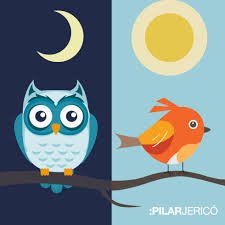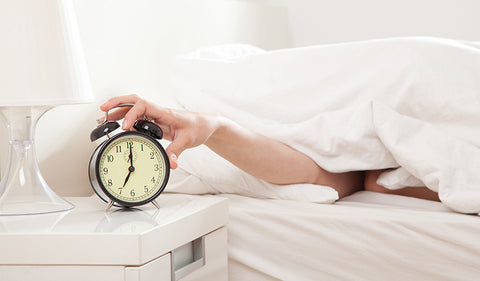Larks vs Owls: Are you a Morning or Evening Type?

Larks vs Owls: Are you a Morning or Evening Type?

Ángeles Rol, PhD & Juan Antonio Madrid PhD
Chronobiology Laboratory, University of Murcia. Murcia, Spain.
Herbalife Nutrition, a global nutrition company, whose purpose is to make the world healthier and happier, commissioned a special series of articles from us to explain the importance of the biological clock for wellness, how nutrition needs to be carefully timed and how the biological clock is directly linked to a healthy, active lifestyle.

Are you a lark or an owl? This not a question of ornithology but of chronotypes. We are speaking of our tendency to ‘morning-ness or ‘evening-ness’ depending on when we organise ourselves temporally. Individuals adopt specific temporal relationships between external and internal time, called the ‘phase of entrainment’ – and individual differences in this trait are referred as chronotypes.
Some people (larks or morning types) feel best in the morning, they can easily go to sleep early in the evening, get up early and feel hunger, while others (owls or evening types) have trouble going to sleep before midnight, or getting up in the morning, and they usually skip breakfast because they do not feel hunger. That is, morning types have earlier-phased circadian rhythms than evening types (including melatonin or cortisol rhythms). However, it is also fair to say that, most people belong to a neither type and lie somewhere in the middle with intermediate characteristics. In fact, they follow a Gaussian distribution.

Human preferences in the timing of sleep, waking-up and activities are, at least partly, based on genetics but age and gender are other factors to be considered. Thus, ‘morning-ness’ during childhood progressively shifts to ‘evening-ness’ with adolescence and early adulthood (at its maximum at around age 20 though slightly earlier for girls) to return again to a morning type in the elderly. Women are earlier chronotypes than men until approximately menopause when this relation is inverted.
However, light exposure is also an influencer; the longer our exposure to outdoor light, the more advanced (earlier) our sleep period. Besides, sleep itself influences our exposure to light: when getting up late we avoid light exposure during the early morning and so prevent its phase advancing effects on our circadian system which creates a delay.
Chronotypes are mainly assessed by self-assessment questionnaires that subjectively evaluate when we are at our best for performing activities compared with the habits of others. The two most scientifically renowned are the morning-ness/evening-ness test1 and the Munich chronotype2 (based on timing differences on work and free days mid-sleep) although objective measurements are preferable. Try the test here.
‘Evening-ness’ may present some unfavourable aspects, like accumulating a sleep debt during the week, poorer academic performance, higher prevalence of metabolic disorders, increased odds for depressive disorder or risk-taking in specific decision making, to mention several negative outcomes. However, it can also be an advantage when adapting to a night-shift job.
Chronotype reflects both genetic and behavioural components including self-selected light exposure. Since we cannot change our genetics we should change our habits. Contrast between day and night, regularity and synchronisation can help.

So, if you want to mitigate the problems associated with an extreme evening chronotype, you should avoid light exposure before bedtime (especially blue light) or intensive exercise at the end of the day, while increasing outdoor light exposure during the day and exercise in the morning. Try to be as regular with your meal times as possible – do not skip meals or snack constantly.
References:
- Horne JA and Östberg O. (1976) A self-assessment questionnaire to determine morningness eveningness in human circadian rhythms. International Journal of Chronobiology 4:97-100.
- Roenneberg T, Wirz-Justice A, Merrow M. Life between clocks: daily temporal patterns of human chronotypes. J Biol Rhythms. 2003 Feb;18(1):80-90.
- Touitou Y, Touitou D, Reinberg A. Disruption of adolescents’ circadian clock: The vicious circle of media use, exposure to light at night, sleep loss and risk behaviours. J Physiol Paris. 2016 Nov;110(4 Pt B):467-479. doi:10.1016/j.jphysparis.2017.05.001.
- Roenneberg T, Merrow M. Entrainment of the human circadian clock. Cold Spring Harb Symp Quant Biol. 2007;72:293-9. doi: 10.1101/sqb.2007.72.043.
